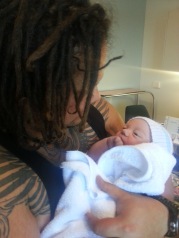Aspirations without fears.
Follow this the link to an article that is great to reflect on when considering gathering parents aspirations for their children. Lego children learn through play
These conversations with whānau need to really be kanohi ki te kanohi rather than a form to fill in. Through meaningful conversations parents are asked to consider their hopes and dreams for the children. As the article says there is so much unnecessary pressure for parents regarding their aspirations.
 Imagine the moment that the father or mother gazes upon their child for the first time, what would be going through their minds. I could imagine, “I want the world for you, for you to be happy, healthy, loved …….” without the pressured thoughts of getting ready for school, life, a job, or being left behind as the article talks about.
Imagine the moment that the father or mother gazes upon their child for the first time, what would be going through their minds. I could imagine, “I want the world for you, for you to be happy, healthy, loved …….” without the pressured thoughts of getting ready for school, life, a job, or being left behind as the article talks about.Ka Hikitia Accelerating Success 2013-2017 states,
A productive partnership in education means a two-way relationship leading to and generating shared action, outcomes and solutions. Productive partnerships are based on mutual respect, understanding and shared aspirations. They are formed by acknowledging, understanding and celebrating similarities and differences.
For Ka Hikitia – Accelerating Success 2013– 2017 to be successful, stakeholders must form productive partnerships where there is an ongoing exchange of knowledge and information, and where everybody contributes to achieving the goals.
A productive partnership starts with the understanding that Māori children and students are connected to whānau and should not be viewed or treated as separate, isolated or disconnected. Parents and whānau must be involved in conversations about their children and their learning. They need accessible, evidence-based information on how to support their children’s learning and success.
Reflective question: How do we incorporate parents/whānau voice, aspirations, knowledge, passions and past experiences into the day to day curriculum, our annual planning and strategic plans?

I totally agree. As a practitioner, the only way I have managed to do this taking time. In the community where I teach, time is a precious commodity. Time spent listening. Time spent attending events. Time doing home visits. Time spent in small slots that adds up to commitment. Time doing the little things for children that a mum might do. Time noticing these things. Time out of my day. And along with time, being an authentic, honest and trustworthy person. Taking time is a heart thing. It is about people and showing people they matter.
ReplyDeleteHow do you show this in annual plans and strategic plans? I think learning stories are a great way of showing this. If you can record a series of communications as a story this shows in a qualitative way the time spent. Freeing up teachers to be able to see this as important is also vital. Taking time to talk with whanau isn't seen as directly improving learning. However there is a link. I have seen how getting parents on board has directly improved students reading. However, as I said, it took time and many small interactions.